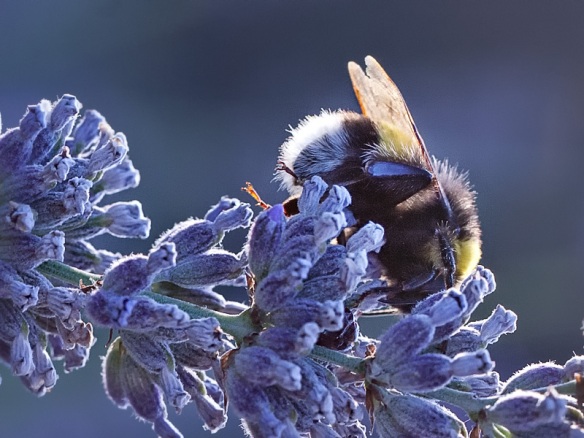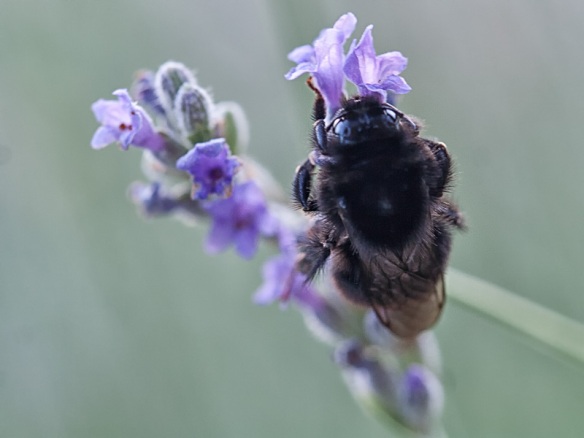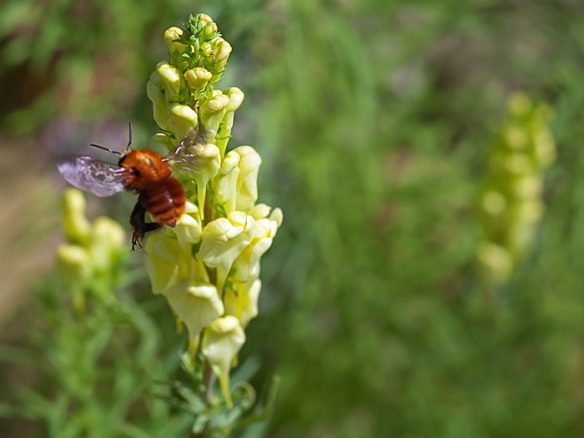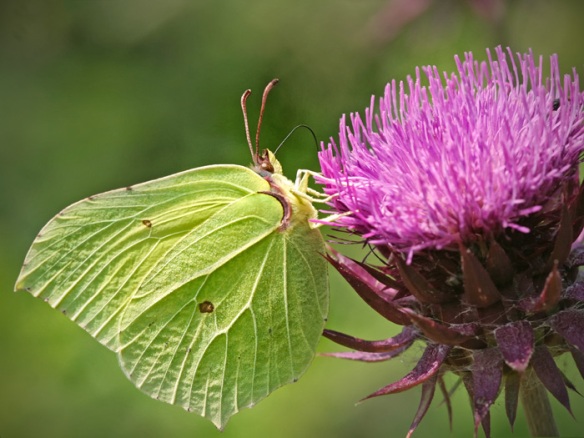

Above you can see photos of Garden bumblebee (Bombus hortorum) male falling asleep on a spike of lavander flower. I took the photograph in the evening, just as sunset was over and the temperature was goind down. The bumble bees showed signs of having difficulty to move and setteled on the flowers of a border of lavender for the night.
Once males leave the nest they do not go back, so they have to find somewhere to spend the night. Hanging underneath the heads of flowers, clinging to small flowers, even getting right into them, in case of big flowers, is what they normally do.
Their temperatures will drop and by morning they will have used up their stores of energy, so until they warm up by either drinking nectar or just waiting in the sun or both, they will appear listless and slow. And easy to photograph – I’d like to add.
Sleeping on or inside flowers is a good strategy for bumblebees as research has shown that the temperature at the base of flowers, near the source of nectar, can be as much as 10 °C higher than the surrounding air temperature.


